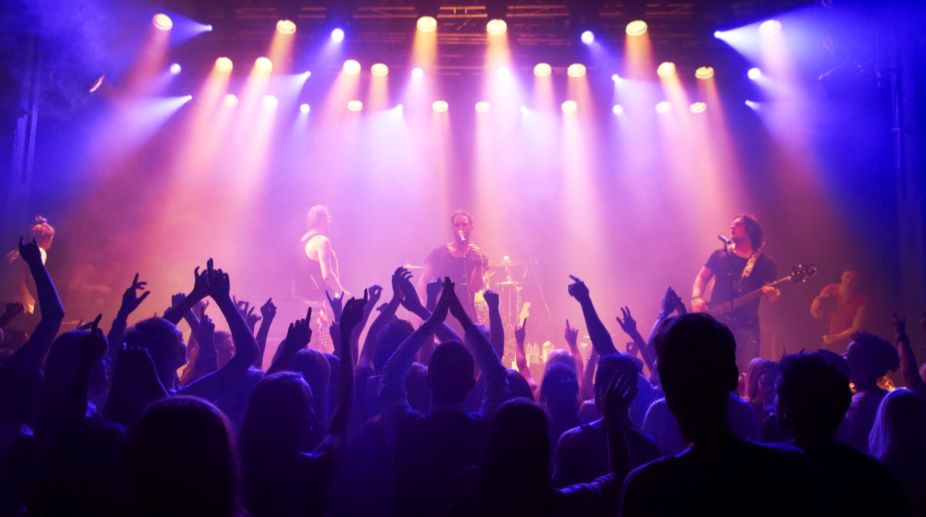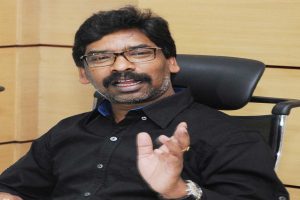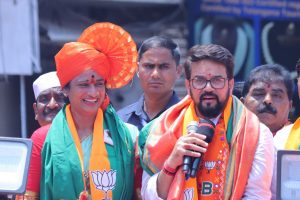Music is everywhere. When music acts as a mediator between spiritual and sensual life, one can truly understand the quietude of the nature and the echoes of the inner soul coming together. It would not be improper to quote American singer and actor Jack Black, who says, "I do not have spirituality in my life at all, but music can take me to the highest heights, it's almost like a spiritual feeling. It fills that void for me."
With every genre of music telling a different story, the World Sacred Spirit Festival, set against the backdrop of the historical Mehrangarh Fort in Jodhpur, opened its doors to artists, who redefined music with spirituality. The festival, that took place from 13-15 February, inspired many new and diverse musicians across the globe, who believe music to be a means to connect with the sacred souls or the divine one. Sacred music not only means pure in religious sense, but free from hatred and immune from negativity. The term "sacred spirit" means surrendering oneself to the divine one by chanting hymns or singing in praise of the lord.
"This festival is named 'Sacred Spirit' because we wanted to give a chance to the mystic and spiritual music. We not only wanted to encourage the artists and their art but also we wanted to make this historical Mehrangarh Fort come alive with spirituality and mysticism," said festival director Alan Weber.
The festival, which started at Ahhichatragarh Fort of Nagaur as a celebration to mark the UNESCO World Heritage Award for the conservation and continuation of Sufi/sacred traditions of India and the world, recently hosted its 10th edition. Every tune, every note, every word and every song had a different meaning and language but the goal was "connection with the divine one". With many traditions, history, folklores, stories and practices brought forward by the musicians, the festival established music as the perfect blend of art, spirituality and mysticism.
Giving a myriad music lovers a chance to have a glimpse of the sacred music, the festival introduced umpteen artists, who not only performed beautifully but left the audiences in awe. The sacred hymns compelled the listeners to lift their hands, chant the songs and dance, forgetting all the woes and worries of their chores and walk around in the realm of peace, love and spirituality. Some of the major highlights were:
Castes of Manganiyars and Langas
Carrying the traditions of the Indian sub-continent, musicians and poets of Rajasthan are blessed with the majesty of their environment. In former times, under the rule of the warring Rajputs, a multitude of artists travelled around the country. This silhouette of lower castes were each specialised in a particular artistic field. Today, the art of these castes is fading very quickly with modernity.
The castes of Manganiyars and Langa singers are trying their best to preserve their amazing heritage by performing at music festivals and other concerts. Although Muslims, Manganiyars and Langas remain very close in their spiritual beliefs of Hinduism, which is true for Manganiyars exclusively serving Rajput and Brahmin Hindu castes. Their singing can refer to cyclical celebrations of birth or marriage, bhajans, songs about rain, water of the sky (palarpani), which is invoked by desert poets at the time of the month of the "Jeth" (around May).
The professional music is the link between daily life and spiritual beliefs, even in secular folk music, a folk music that is facing a new industrial society and may soon disappear. The vulnerabilities against modernism and confidence in their originality were clearly visible during the performance of the Manganiyars and the Langas.
The art of the Chinese Pipa
Lingling Yu from China brings the four stringed Pipa instrument to the Indian soil, bringing about a marriage of emotion and serenity that unites "Yin and Yang" , the two fundamentals of the Chinee philosophy. The oldest Chinese musical instrument, Pipa symbolises two terms, "Pi" and "Pa", which are two playing techniques (denoted as "Tan" and "Tiao" today). The earliest Chinese written texts about Pipa date back at least to the second century. There was a huge repertoire of Pipa music in Chinese history, particularly during the Tang dynasty. Many of the compositions that make up the traditional repertoire were handed down from generation to generation through individual artists. There are also lots of written texts and famous poems about the Pipa music played by various performers in Chinese history. In his poem, the Pipa song, Bai Juyi, one of the leading poets in the Tang Dynasty, described vividly the Pipa music performed by an artist. The poetry says, "The thicker strings rattled like splatters of sudden rain, the thinner ones hummed like a hushed whisper. Together they shaped strands of melody like larger and smaller pearls falling on a jade plate.” Lingling Yu's rendition finds mastery over all techniques of the instrument ~ strength, precision, creativity and a great degree of finesse maintaining the poignant balance of nature.
Joshua Songs of Indian Mantras
Deeply inspired by the venerable culture, the young German musician began his musical journey by inducting various western forms of music with the exotic and rooted Indian classical and folk notes. Prem Joshua, who toured India and Europe to find his music, mastered his skills in Sitar, which he uses to create songs based on traditional Indian mantras, shlokas and poetries of Mahabharata and Ramayana. Through each of his songs, Joshua has achieved credibility and acclaim even in the Indian music fraternity. Prem Joshua, through his songs, offers a fresh take on devotional music, trying to transcend the boundaries of creativity. As Prem Joshua says, "In a world where fanaticism and ignorance seem to be taking hold ever more strongly, this prayer shines like a beacon, guiding our journey along the 'road to Om'."
Mystical traditions of Baul and Gnawa
The Bauls, meaning literally mad and drunk on divine aspiration, are the last great nomad performers in the world who connect the mystics between poetic ecstasy and physical reality. Gnawas, who are not very different from the Bauls, find their universe, whose roots go down into their ancestral African trance. Poetess Parvathy Baul and Mehdi Nassouli beautifully come together to chant the mystics of the connection between the earth and the heaven. Parvathy Baul performed a vast variety of poems, accompanied by two instruments ~ the single string "ektara" and the "duggi drum". Parvathy, who has followed the vocal styles of her guru Sanathan Das Baul, beautifully impreses the poetry with a unique flavour and energy. Whether inspired by Buddhism, Hinduism or Islam, is of no matter to them. The Bauls, also known as the "Sacred Anarchists", sing everywhere. They sing at home, on the road, in the boat or in trains. The Bauls lift their arm high with a spirit that makes the mind free from physical worries. In another mystical tradition filled with universal conscience, the Gnawas from Morocco also dance and sing the songs of connection between earth and the sky.
The Gnawas are the descendants of West African slaves, who were brought to "Guinea Mali" but still they claim their spiritual descent from Bilal al-Habashi, the Ethiopian who served as the Prophet Muhammad's first “muezzin” , a person who calls the Muslim faithful to prayer. Gnawas originally used their music and dance to heal the wounds of slavery. Today their rituals are held to cure and protect from mental illness, scorpion bites and malicious spirits . In Moroccan belief spirits cannot be exorcised . The belief is that until the possessed submits to the possessor, the spirit will cause many problems in the possessed lifetime.
Many Gnawa devotees, who are called "Muhibs", which translates as "lover of trance", must continue to surrender to the spirits and appease them. The meeting of these tow mystical traditions of Baul and Gnawa performed together by Parvathy Baul and Mehdi Nassouli never fails to charm the listeners. Performing the poetry of Fakir LalonShah, Parvathy sings,
Tell me, oh crazy one,
What are you searching for on the pathways of the world?
Look in your room and you will find a gem there
The same game is being played in the human body,
Like the moon hides behind the clouds.
To know oneself, that is what to pray for.
One who knows the Invisible, says
Knows where to go.











